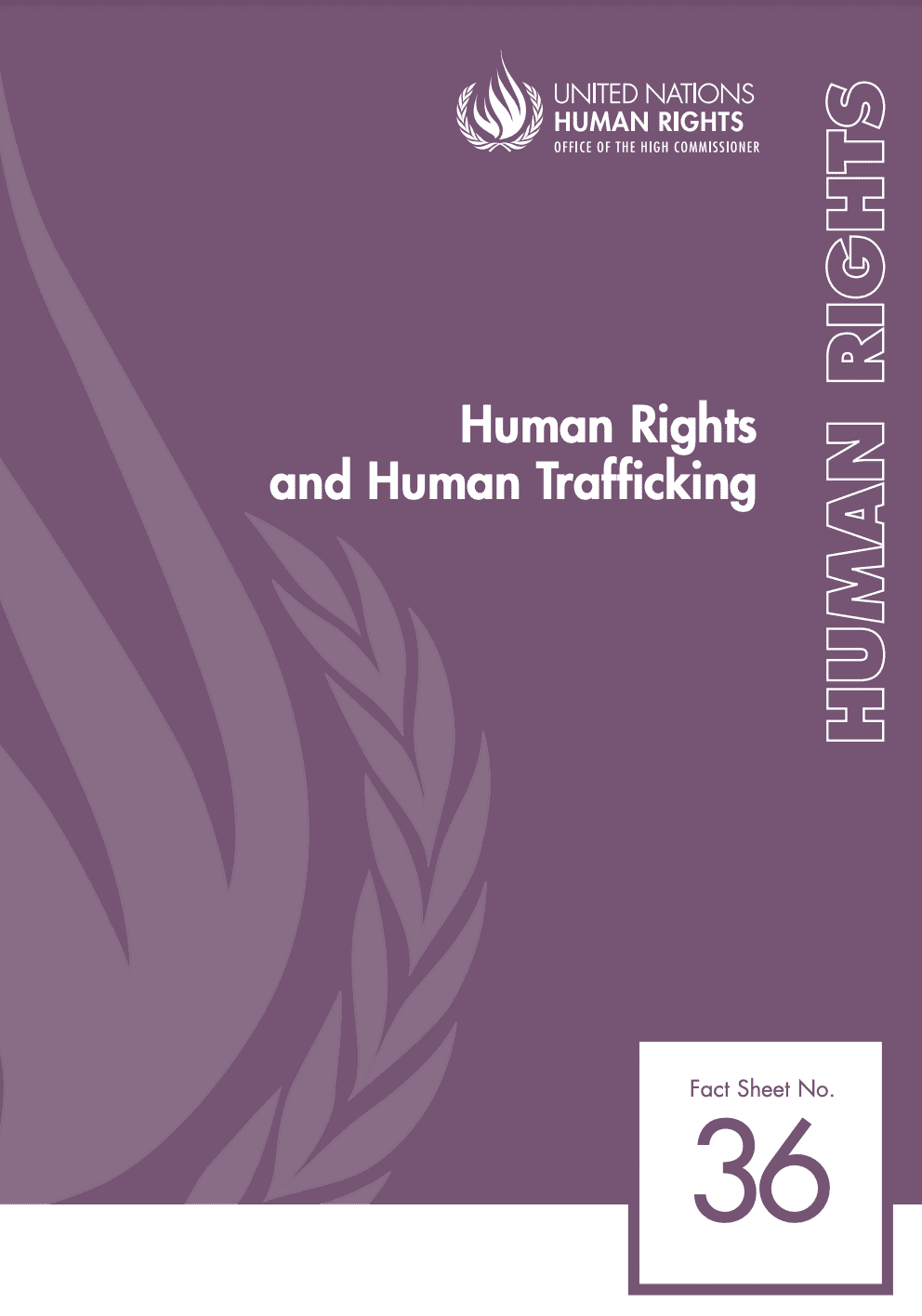
Human Rights and Human Trafficking
Introduction
Human trafficking is generally understood to refer to the process through which individuals are placed or maintained in an exploitative situation for economic gain. Trafficking can occur within a country or may involve movement across borders. Women, men and children are trafficked for a range of purposes, including forced and exploitative labour in factories, farms and private households, sexual exploitation, and forced marriage. Trafficking affects all regions and most countries of the world.
While it is difficult to secure reliable information about patterns and numbers, our understanding about why trafficking happens has improved. Inequalities within and between countries, increasingly restrictive immigration policies and growing demand for cheap, disempowered labour are just some of the underlying causes that have been identified. The many factors that increase individual vulnerability to trafficking include poverty, violence and discrimination.
The exploitation of individuals for profit has a long history and international efforts to address it can be traced back at least a century, well before the birth of the modern human rights system. However, it is only over the past decade that trafficking has become a major concern. During that same period, a comprehensive legal framework has developed around the issue. These changes confirm that a fundamental shift has taken place in how the international community thinks about human exploitation. It also confirms a change in expectations of what Governments and others should be doing to deal with trafficking and to prevent it. Hence, the victim-centred approach is also gathering increased support from the international community. Human rights form a central plank of the new understanding and there is now widespread acceptance of the need for a human rights-based approach to trafficking. As explained further in this Fact Sheet, such an approach requires understanding of the ways in which human rights violations arise throughout the trafficking cycle and of the ways in which States’ obligations under international human rights law are engaged. It seeks to both identify and redress the discriminatory practices and unequal distribution of power that underlie trafficking, that maintain impunity for traffickers and that deny justice to victims.
This Fact Sheet seeks to provide a brief but comprehensive overview of human rights and human trafficking. In exploring the applicable legal and policy framework, it draws on two major outputs of the Office of the United Nations High Commissioner for Human Rights (OHCHR): the 2002 Recommended Principles and Guidelines on Human Rights and Human Trafficking and its extensive Commentary.
The Fact sheet is divided into four chapters. Chapter I explores the definition of trafficking and its core elements. It also examines some of the myths and misunderstandings around the definition. Chapter II considers the relationship between human rights and human trafficking. It identifies those human rights that are commonly affected by trafficking and considers the situation of special groups with reference to additional or different rights to which they may be entitled. This chapter also summarizes what is involved in taking a “human rights-based” approach to trafficking. Chapter III turns to the obligations of States. It identifies the sources of these obligations and explains how a State may be legally responsible for the harm caused by trafficking, even if it did not directly cause it. Specific obligations of States are discussed with reference to victim protection and support; repatriation and remedies; criminal justice responses; and prevention. Chapter IV considers how these obligations can be implemented and monitored, with a view to ensuring that States and others are held accountable for their acts and omissions.
Read more here.
